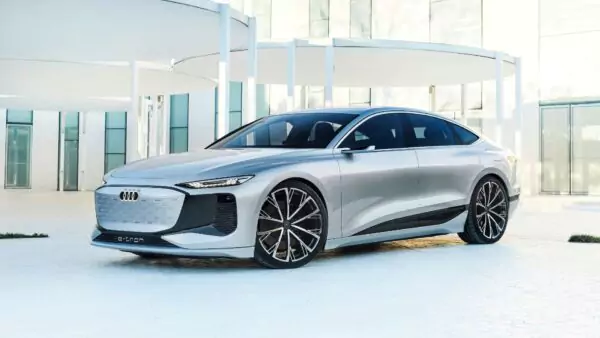EVs: Silent, Green, Rapid, Transformative Future Ahead
Imagine a world where your car runs silently, emits zero tailpipe emissions, and charges up as quickly as a coffee break. This future is closer than you think, thanks to the rapid advancements in electric vehicle (EV) technology.
Electric vehicles have come a long way in recent years. Initially dismissed as a niche market, they are now gaining significant traction and reshaping the automotive industry. However, the current state of the EV market is just the beginning of a larger, more sustainable revolution.
In this article, we will explore the current landscape of electric vehicles, the technological advancements driving their growth, market trends and consumer adoption, their environmental impact, upcoming innovations, and the challenges that lie ahead. By the end, you will have a comprehensive understanding of the future of EVs and your role in this transformative shift.
Imagine a world where your car runs silently, emits zero tailpipe emissions, and charges up as quickly as a coffee break. This future is closer than you think, thanks to the rapid advancements in electric vehicle (EV) technology.
Electric vehicles have come a long way in recent years. Initially dismissed as a niche market, they are now gaining significant traction and reshaping the automotive industry. However, the current state of the EV market is just the beginning of a larger, more sustainable revolution.
In this article, we will explore the current landscape of electric vehicles, the technological advancements driving their growth, market trends and consumer adoption, their environmental impact, upcoming innovations, and the challenges that lie ahead. By the end, you will have a comprehensive understanding of the future of EVs and your role in this transformative shift.
Technological Advancements

Technological Advancements
Battery technology improvements:
Battery technology has come a long way, with significant improvements in energy density. This means that modern batteries can store more energy in a smaller and lighter package, increasing the driving range of electric vehicles.Battery durability has also improved, with manufacturers developing longer-lasting batteries that can withstand numerous charge cycles without significant degradation. This improvement in battery life is increasing consumer confidence and reducing concerns about expensive battery replacements.
Charging infrastructure development:
Charging infrastructure is rapidly expanding, with more public charging stations installed worldwide. This growth in charging networks allows EV owners to recharge their vehicles conveniently and alleviates range anxiety.Fast-charging technology is revolutionizing the EV charging experience. With high-power chargers capable of delivering 250 miles of range in just 15 minutes, long charging times are becoming a thing of the past. This development is making EVs more practical for long-distance travel.
Why Electric Vehicle is the Future
In today’s world, electric vehicles (EVs) are becoming the go-to choice for transportation. Why? Because they offer a cleaner and smarter way to get around. They are like the superheroes of cars, helping to save the planet, using energy efficiently, and costing less to run. Let’s explore why EVs are shaping the future of how we travel.
Government incentives and policies promoting EVs
According to the National Conference of State Legislatures, Governments worldwide are implementing incentives to accelerate the transition to electric vehicles. Subsidies, tax credits, and grants make EVs more affordable for consumers and encourage their adoption.
To combat climate change, many countries have set ambitious emission reduction targets. These targets drive automakers to prioritize developing and producing electric vehicles.
According to the National Conference of State Legislatures, Governments worldwide are implementing incentives to accelerate the transition to electric vehicles. Subsidies, tax credits, and grants make EVs more affordable for consumers and encourage their adoption.
To combat climate change, many countries have set ambitious emission reduction targets. These targets drive automakers to prioritize developing and producing electric vehicles.
Range improvements
Modern electric vehicles offer impressive driving ranges, with some models surpassing 300 miles on a single charge. These extended ranges eliminate the fear of running out of power and make EVs a viable option for everyday use.
As driving ranges increase, consumer confidence in electric vehicles is growing. The ability to travel long distances without constant recharging is a crucial factor in driving EV adoption rates.
Modern electric vehicles offer impressive driving ranges, with some models surpassing 300 miles on a single charge. These extended ranges eliminate the fear of running out of power and make EVs a viable option for everyday use.
As driving ranges increase, consumer confidence in electric vehicles is growing. The ability to travel long distances without constant recharging is a crucial factor in driving EV adoption rates.
Consumer adoption rates
Factors such as lower operating costs, reduced environmental impact, and advanced technology are influencing consumers to choose electric vehicles over traditional gasoline-powered cars. While the initial purchase price of an EV can be higher than that of a conventional car, lower maintenance and fuel costs make EVs more affordable overall. This cost-saving potential is attracting more consumers to electric mobility.
Factors such as lower operating costs, reduced environmental impact, and advanced technology are influencing consumers to choose electric vehicles over traditional gasoline-powered cars. While the initial purchase price of an EV can be higher than that of a conventional car, lower maintenance and fuel costs make EVs more affordable overall. This cost-saving potential is attracting more consumers to electric mobility.

The rise of electric SUVs and trucks
Automakers are diversifying their electric vehicle offerings, introducing electric SUVs and trucks to cater to a broader range of consumer preferences. This expansion is making EVs more appealing to a wider audience. The introduction of electric SUVs and trucks is increasing market diversity and challenging the notion that electric vehicles are only suitable for compact cars. This shift is vital for the widespread adoption of electric mobility.
Automakers are diversifying their electric vehicle offerings, introducing electric SUVs and trucks to cater to a broader range of consumer preferences. This expansion is making EVs more appealing to a wider audience. The introduction of electric SUVs and trucks is increasing market diversity and challenging the notion that electric vehicles are only suitable for compact cars. This shift is vital for the widespread adoption of electric mobility.
Reduction in greenhouse gas emissions
Electric vehicles have the potential to significantly reduce greenhouse gas emissions compared to traditional internal combustion engine vehicles. By replacing fossil fuel-powered engines with electric motors, EVs emit zero tailpipe emissions, resulting in cleaner air and reduced carbon dioxide emissions.
Electric vehicles have the potential to significantly reduce greenhouse gas emissions compared to traditional internal combustion engine vehicles. By replacing fossil fuel-powered engines with electric motors, EVs emit zero tailpipe emissions, resulting in cleaner air and reduced carbon dioxide emissions.
Sustainable materials and manufacturing
The electric vehicle industry is also focusing on sustainable sourcing of materials. Manufacturers are exploring alternatives to traditional materials, such as using recycled and responsibly sourced components. This approach reduces the environmental impact of the manufacturing process.
The electric vehicle industry is also focusing on sustainable sourcing of materials. Manufacturers are exploring alternatives to traditional materials, such as using recycled and responsibly sourced components. This approach reduces the environmental impact of the manufacturing process.
Eco-friendly production practices
In addition to sustainable sourcing, automakers are adopting eco-friendly production practices. From energy-efficient manufacturing facilities to waste reduction and recycling programs, the industry is striving to minimize its ecological footprint.
In addition to sustainable sourcing, automakers are adopting eco-friendly production practices. From energy-efficient manufacturing facilities to waste reduction and recycling programs, the industry is striving to minimize its ecological footprint.
Innovation on the Horizon

Innovation on the Horizon
Self-Driving Technology:
The integration of self-driving technology with electric vehicles holds immense potential. Autonomous electric vehicles can optimize energy efficiency, reduce traffic congestion, and enhance overall safety on the roads. Self-driving electric vehicles have the potential to reduce accidents caused by human error and optimize driving patterns for maximum energy efficiency. These advancements can lead to safer and more sustainable transportation systems.
Hydrogen fuel cell vehicles:
While lithium-ion batteries dominate the electric vehicle market, hydrogen fuel cell vehicles (FCVs) offer an alternative approach. FCVs generate electricity through a chemical reaction between hydrogen and oxygen, producing water vapor as the only emission.Hydrogen fuel cell vehicles have the advantage of shorter refueling times and longer driving ranges compared to battery-powered EVs. However, challenges such as hydrogen infrastructure development and the efficiency of hydrogen production remain to be addressed for widespread adoption.
Here are some challenges before Electric Vehicles can take over the automotive industry.
Battery disposal and recycling
As the popularity of electric vehicles grows, so does the concern about the proper disposal and recycling of batteries. Developing efficient and environmentally responsible methods for battery disposal and recycling is crucial to minimize the environmental impact of EVs.
Infrastructure gaps in rural areas
While urban areas are witnessing a rapid expansion of charging infrastructure, rural areas often face infrastructure gaps. It’s important to make sure everyone, no matter where they live, can easily charge their electric cars. This way, everyone can enjoy the benefits of electric vehicles.
Supply chain challenges
The production of electric vehicles relies on a complex global supply chain. Ensuring a responsible and sustainable supply chain, including the sourcing of materials and ethical labor practices, is vital to maintaining the positive environmental impact of EVs.
Conclusion
Electric vehicles have made remarkable progress and are poised to shape the future of transportation. Technological advancements, market trends, and government incentives are driving the widespread adoption of EVs. Their environmental benefits, coupled with the promise of upcoming innovations, make electric vehicles a compelling choice for a sustainable tomorrow.
As an individual, you can contribute to the EV transition by considering an electric vehicle for your next car purchase. By choosing electric, you not only reduce your carbon footprint but also support the development of sustainable transportation systems. Together, we can drive towards a greener and more sustainable future with electric vehicles at the forefront.
Electric vehicles have made remarkable progress and are poised to shape the future of transportation. Technological advancements, market trends, and government incentives are driving the widespread adoption of EVs. Their environmental benefits, coupled with the promise of upcoming innovations, make electric vehicles a compelling choice for a sustainable tomorrow.
As an individual, you can contribute to the EV transition by considering an electric vehicle for your next car purchase. By choosing electric, you not only reduce your carbon footprint but also support the development of sustainable transportation systems. Together, we can drive towards a greener and more sustainable future with electric vehicles at the forefront.